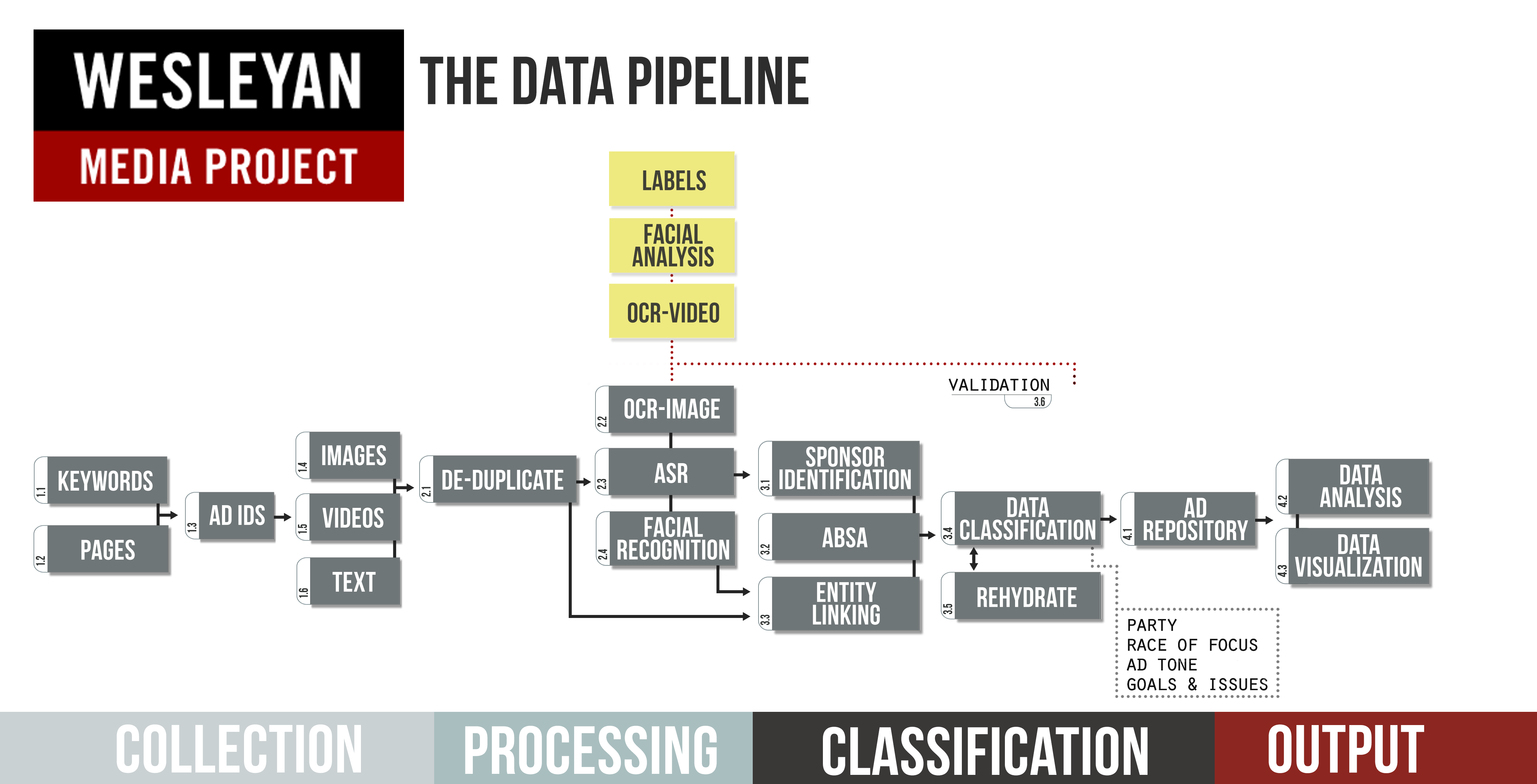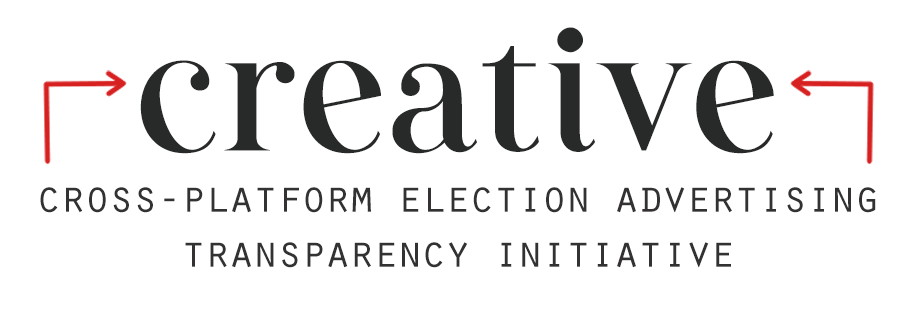
The Cross-platform Election Advertising Transparency Initiative (CREATIVE) is a joint infrastructure project of the Wesleyan Media Project (WMP) and Privacy Tech Lab at Wesleyan University in Middletown, Connecticut. This program is funded by a National Science Foundation grant to support WMP’s mission to make data accessible to anyone. CREATIVE aims to provide cross-platform integration and standardization of digital advertising data related to federal elections by accessing and computationally coding (with training and validation using human labeling) hundreds of thousands of digital election ads.
This website is a direct product of our NSF grant and serves to create open and accessible data and scripts that can be modified for use by others in similar contexts. Our raw data, hosted on Figshare, and our scripts, available on GitHub, can be downloaded and revised for your use case.
Closer Look: Challenges

The use of digital political advertising has rapidly increased over the past decade. Although platform libraries like those available from Meta (which include Facebook and Instagram) and Google (including Google Search and YouTube) have granted unprecedented access to the paid advertising that appears on these platforms, the infrastructure for easily tracking and comparing data by sponsor and especially by office of focus (i.e., U.S. House or the U.S. Senate) remains a large barrier. This affects academics, journalists, and anyone else with an interest in understanding elections. There are three reasons for these barriers: expertise in data access, cost, and variability in platform data structures.
While accessing the libraries can be fairly easy, there is a level of expertise needed for programmatic tools given the sheer volume of data. These novel computational tools, which allow for acquiring and filtering the data, incur monetary and time costs. One must acquire and filter millions of data observations from the two largest platforms (Google and Meta) and then integrate and label the observations into different types (video, text, and image), so they can be modified to apply to other contexts.
With these digital libraries having no standardization between the formatting of data, this filtering would required considerable time and money. The digital libraries lack metadata that would allow one to find similar ads related to a specific candidate or race and do not allow for user-friendly for comparisons.
Thus, current efforts to examine online political advertising are piecemeal. CREATIVE aims to reduce the cost of and barriers to analyzing digital advertising in federal races by distributing our final data and the scripts used to acquire and filter these data, which should result in not only more research in this area but should allow under-resourced researchers to contribute as well.

The objective of the Cross-Platform Election Advertising Transparency Initiative (CREATIVE) pilot infrastructure is to provide cross-platform integration and standardization of digital advertising data related to elections (advertising that references candidates for office) that does not currently exist.


